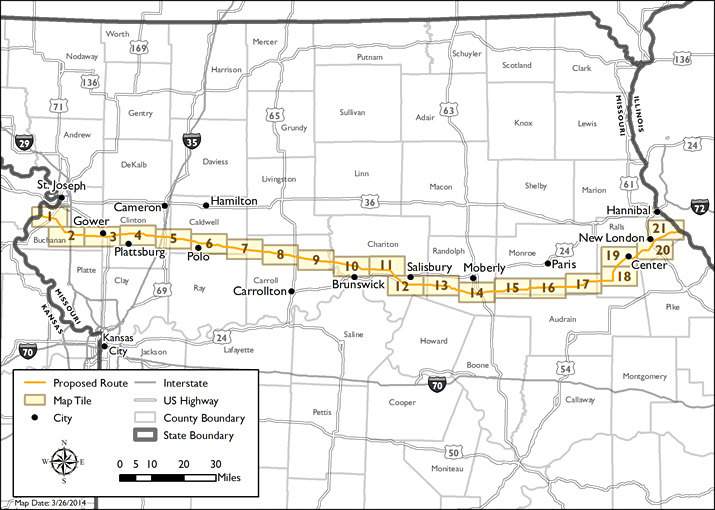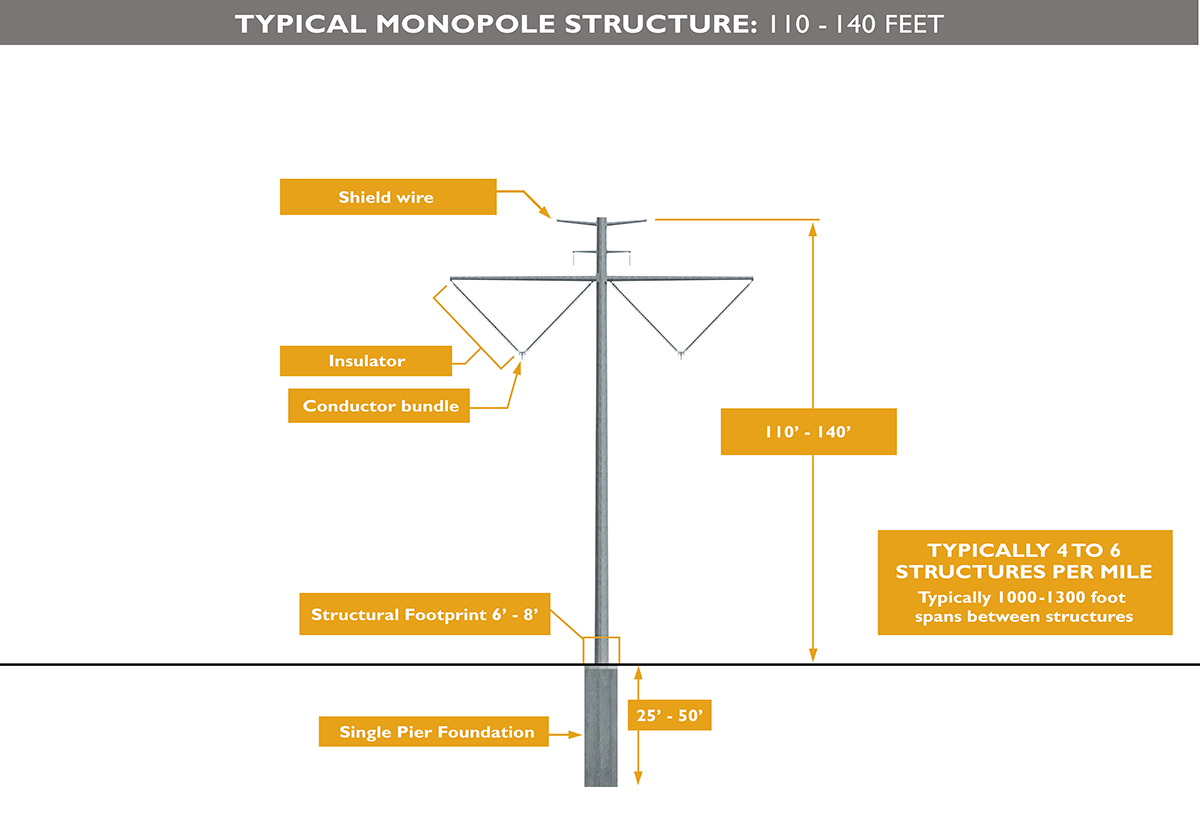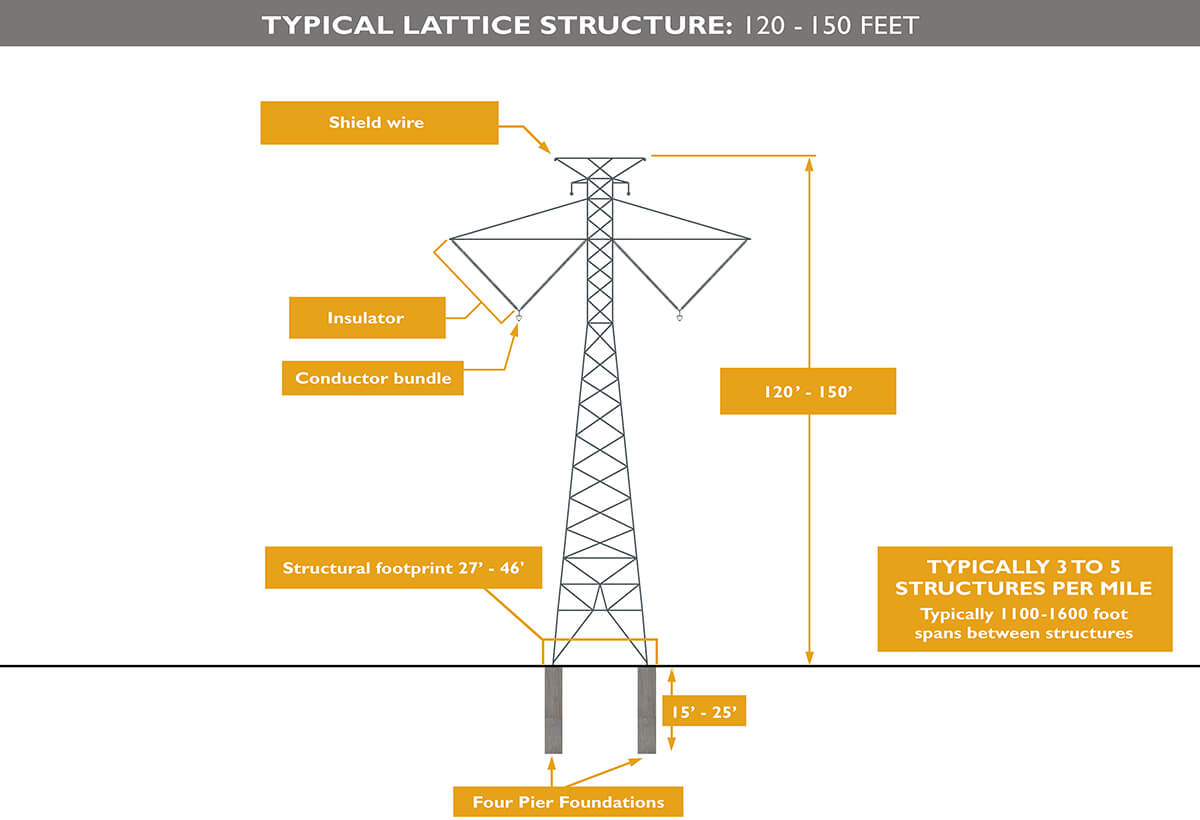Grain Belt Express Project - Invenergy
On June 30, 2016, Grain Belt Express Clean Line applied to the Missouri PSC for a certificate of convenience and need to give it authority to construct and operate a 4,000 megawatt capacity high voltage direct current (HVDC) transmission line through Missouri from Kansas to Illinois. A similar line was denied by the PSC in August 2015. The Grain Belt Express line has been the subject to strong opposition from landowners and communities that will be physically impacted by the project. The proceedings before the Mo PSC can be found by following this LINK.
In August 2022,Grain Belt applied for a significant revision to the project seeking to increase the capacity to 5,000 megawatts and to add a 2,500 megawatt A/C extension in mid-Missouri. The extension, called the “Tiger Connector”would travel south from Monroe County through Audrain County and Callaway County. The entire project would be then built in two phases, with the first phase from Kansas up to and including the Tiger Connector. The remaining portion of the Grain Belt line would then be built to its planned terminus in Indiana. The changes were approved by the Missouri Publice Service Commission in October 2023. (The proceedings before the Mo PSC can be found by following this LINK.)
TOP NEWS:
UPDATES:
- January 28, 2025 - The Missouri Supreme Court denies an appeal to reiview the PSC approval of the revised plan to add Tiger Connector, making the PSC decision final.
- September 26, 2024 - KCC gives conditional approval to lines connecting Grain Belt Express
- August 8, 2024 - Court reverses ICC order on Grain Belt Express project
- October 23, 2023 - Missouri Public Service Commission Approves Tiger Connector Extension to the Grain Belt Express Transmission Line
- March 8, 2023 - Illinois Commerce Commission approves Illinois portion of the Grain Belt Express project, now considered “Phase II”
- August 24, 2022 - Grain Belt files request with the Missouri Public Service Commission to build the “Tiger Connector” extension.
- September 17, 2021 - Grain Belt Express files its first eminent domain petition.
- July 2021 - Grain Belt begins to send revised offers in anticipation of eminent domain proceedings.
- June/July 2021 - Grain Belt begins to send “Notices of Acquisition” to property owners.
- March 24, 2020 - Grain Belt representatives cease making personal visits to landowners.
- March 17, 2020 - The Missouri Supreme Court rejected the request made by the Missouri Landowners Alliance to review the unfavorable decision of the Court of Appeals.
- June 11, 2019 - The Missouri Public Service Commission approves Grain Belt Express Project
WHAT is the project?
Invenergy is a Chicago, Illinois based energy company. It acquired the Grain Belt Project from Clean Line (a Texas-based investment company) in 2018. Clean Line initially proposed several transmission lines similar to the Grain Belt across the country designed to transmit wind-generated energy from the Plains States to Eastern portions of the Country where demand is higher. To date, none of the lines initially proposed by Clean Line have been constructed. The Grain Belt Express is unique from traditional transmission lines in terms of the type and capacity of electricity it will carry.
There are currently no lines of this type or capacity in existence in the United States. By way of comparison, recent transmission line projects in Northern Missouri include the Transource (KCPL) Midwest Transmission Line currently under construction and the proposed ATXI (Ameren) Mark Twain Transmission Line. Both of these lines are 345kv that will transport AC, or alternating current.
The Grain Belt Express project originates in Kansas (where the wind energy would be generated) and ends in Indiana, where the energy would be placed on the “power grid.” Clean Line - and now Invenergy - has suggested that some Missouri municipal utilities may purchase some of the power as it passes through Missouri, but they are not bound to do so. The project will cross 206 miles through a total of eight Missouri counties and across the land of hundreds of property owners. An overview map shows the location of the line:

For a more interactive map:
Invenergy will use “lattice work” structures on the main DC line and on the Tiger Connector the stated intent is to use single (or mono) poles which are both illustrated below:


